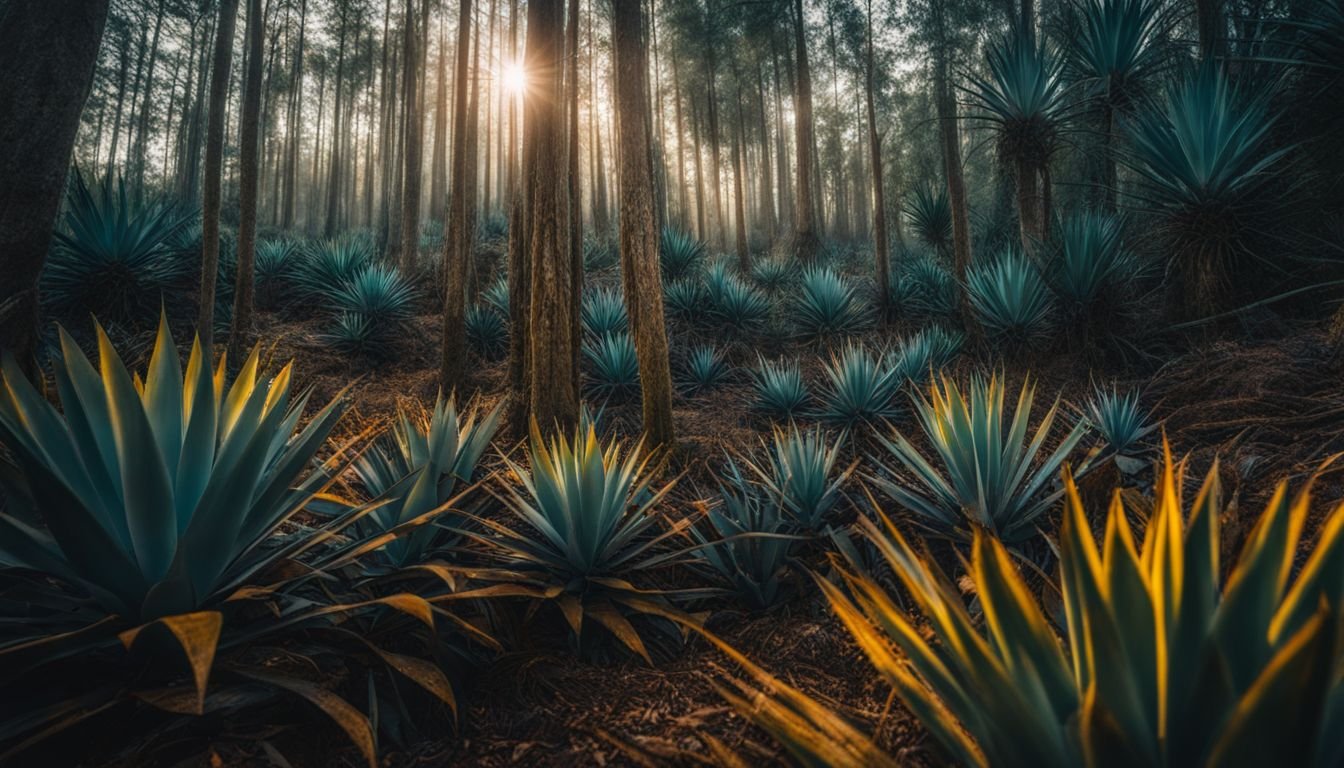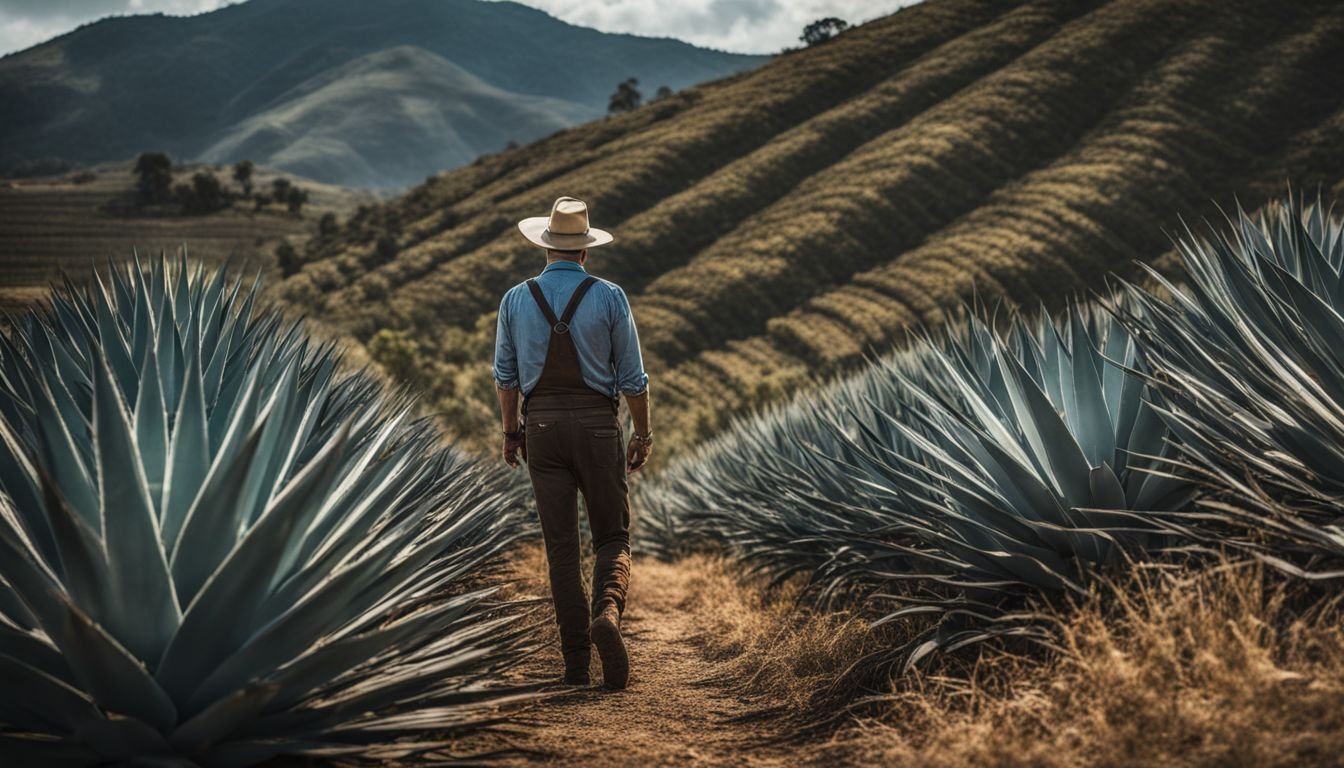Gardening in Queensland is a real treat, eh? Our climate is just the ticket for heaps of plants to thrive, not just the locals but also those that have travelled a fair way from home.
But sometimes, these overseas guests can get a bit too comfy and start popping up where they’re not wanted. This can be a right hassle for our own gardens and precious wild spots. The plant on everyone’s lips lately? The blue agave, also known around as Agave tequilana.
We all know what a mission it can be tackling these unwelcome visitors in our backyards and community spaces. After having a squiz at this issue, turns out there’s an interesting yarn here – while blue agave seems quite happy in our neck of the woods, it hasn’t gone walkabout across Queensland…
yet. Still, considering some of its kin are already stirring up trouble, we’re keeping our peepers peeled. In this blog post, we’ll share the nitty-gritty on keeping blue agave in check and suss out why staying vigilant about this plant matters to all us green thumbs down under.
Keen to find out more? Stick around!
Key Takeaways
- Blue agave, originating from Jalisco, Mexico, finds Queensland’s climate ideal for growth but poses a threat as an invasive plant by disrupting local ecosystems.
- The spread of blue agave in Queensland impacts both the environment and economy. It competes with native species, affecting biodiversity and increasing costs for farmers and councils to manage this weed.
- Effective control measures against blue agave include using herbicides carefully, physically removing plants, utilising mechanical methods, participating in local biosecurity plans, and educating oneself and the community.
Overview of Blue Agave as an Invasive Plant in Queensland

We’ve noticed blue agave spreading across Queensland, where it shouldn’t grow. Originally from Jalisco, Mexico, this plant thrives in full sun and has started upsetting our local ecosystems.
Description and habitat of Blue Agave
Blue agave, which we know as Agave tequilana, thrives in its native Jalisco, Mexico. This enormous succulent plant sports fleshy, spikey blue-grey leaves that stretch over 2m tall.
It’s the heart of many Mexican spirits like tequila and mezcal because its sugars turn into alcohol during fermentation. Surprisingly, this giant waits about five years before it blooms once then dies after producing seeds.
The blue agave prefers arid or semi-arid regions with sandy soils where sunlight never seems to end. In these hot spots, they don’t just survive; they flourish by storing water in their thick leaves to beat the dry spells common in subtropical climates.
“Falling in love with gardening means getting your hands dirty and heart involved with every plant.”
In Australia, particularly Queensland’s similar climate zones, blue agaves find a second home but aren’t viewed as intruders here. These desert dwellers adapt well without posing major threats to local biodiversity or becoming garden pests.
They offer an exotic touch for Australian gardens looking for resilient plants that cope well under full sun while contributing unique shapes and textures to landscapes.
The Impact of Blue Agave Invasion

The invasion of Blue Agave in Queensland disrupts the local environment and costs our economy heaps. This aggressive invader pushes out native species, reducing biodiversity and threatening our unique ecosystems.
Farmers face tough challenges as Blue Agave spreads rapidly, taking over land meant for crops and livestock. The costs to manage this weed pile up, hitting both large farms and small gardens hard.
To learn more about what we’re doing to fight back against this invasive plant, keep reading!
Environmental and economical implications
Blue agave’s spread in Queensland could put local ecosystems at risk by competing with native plants for resources. This competition might reduce genetic diversity, harming habitats that many animals rely on.
Our love for health foods like agave nectar means we grow more of these plants. Yet, if they spread unchecked into wild areas, the balance of nature shifts. Local wildlife finds it harder to get the food and shelter they need.
Dealing with blue agave also hits our pockets. Councils must outline plans to manage such invasive species, costing taxpayers money. Physical removal and chemical treatments are effective but expensive methods to control its spread.
These costs add up as we strive to keep our environment balanced and productive for agriculture and tourism — two key pieces of Queensland’s economy that thrive on a healthy natural world.
Farmers spend extra time and resources managing invasions on their land, reducing profitability and increasing workloads.
Control Measures for Blue Agave in Queensland
We all care deeply about our Australian gardens and natural habitats. Managing the spread of blue agave in Queensland requires a hands-on approach and knowledge of effective control measures. Here’s how we can tackle it:
- Use herbicides wisely: Chemical solutions help manage blue agave, but select the right type. These substances can target specific plants without harming others around them. Always follow the guidelines for safe use.
- Physical removal works: Digging up blue agave plants including their roots prevents them from growing back. This method is most effective for young plants or small infestations. Wear gloves to protect your hands during removal.
- Try mechanical methods: For larger areas, machinery like tractors equipped with special attachments can pull out these tough plants. It’s an efficient way to clear big patches of land from blue agave.
- Follow local biosecurity plans: Local governments in Queensland have biosecurity plans that include actions against invasive plants like blue agave. Participate in local efforts to keep our environment healthy.
- Educate yourself and others: Knowledge is power. Access fact sheets and resources available for dealing with blue agave invasions in Queensland. Share this information with fellow gardeners and neighbours.
By following these steps, we fulfil our duty to minimise the risks associated with blue agave in our beloved Australian landscapes.
Conclusion
Blue Agave, or Agave tequilana, has grabbed our attention in Queensland. Though it’s not spotted wild and running rampant yet, its preference for sandy soils in our arid landscapes sets a stage for potential trouble.
This plant can shoot up over two meters tall and shows off by flowering once majestically before bidding goodbye. We’ve got 10 of its close relatives already making themselves at home here.
It’s on us to keep an eye out and act smart with control tactics—using herbicides, getting hands-on or consulting local biosecurity plans. By doing so, we protect our unique environment and keep enjoying the outdoors without unwelcome guests like Blue Agave turning up uninvited.
FAQs
1. What is blue agave and why is it important?
Blue agave, known scientifically as A. tequilana or Weber Azul, is a plant crucial for making tequila and agave syrup. It’s famous in the states of Jalisco, Mexico, for its use in drinks like margaritas and desserts such as doughnut holes.
2. How did blue agave become an invasive plant in Queensland?
Originally from Mexico, blue agave was brought to Queensland for agricultural purposes due to its high fructose content. However, it started spreading beyond control, affecting local ecosystems.
3. What problems do invasive blue agaves cause in Queensland?
The spread of blue agave disrupts native plants and animals by taking over their habitats. Its quick growth and ability to outcompete local flora make it a tough invader to manage.
4. Can anything be made from the invasive blue agaves in Queensland?
Yes! Even though they’re considered invasive, these plants can still produce products like tequila, Mexican-inspired margaritas, and low glycaemic index sweeteners such as agave nectars or syrups used in various foods.
5. Are there any efforts to control the spread of blue agaves in Queensland?
Efforts are being made through careful management practices aimed at controlling the spread while exploring sustainable uses for this versatile plant without harming the environment further.
